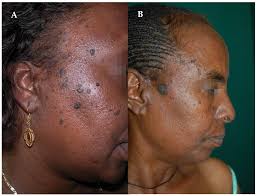


Learn how to reduce melanin and achieve an even skin tone with these 6 effective methods, including sunscreen, exfoliation, and natural remedies.
Melanin is the natural pigment responsible for the color of our skin, hair, and eyes. While it plays a protective role against UV radiation, excessive melanin production can lead to hyperpigmentation, dark spots, and uneven skin tone. If you’re looking to achieve a more uniform complexion or reduce dark patches, you might wonder how to reduce melanin in your skin. This guide provides detailed information on causes, treatments, and natural remedies to help you attain even-toned skin.
Melanin is produced by cells called melanocytes, found in the skin’s outer layer. Several factors can trigger increased melanin production, including:
UV rays stimulate melanocytes to produce more melanin as a natural defense mechanism.
Conditions like pregnancy or hormonal contraceptives can affect melanin levels.
Skin type and genetic predisposition can influence how much melanin your skin produces.
Skin conditions such as acne or eczema can lead to post-inflammatory hyperpigmentation.
Understanding these factors is essential in developing a tailored approach to reducing melanin in your skin.
One of the most effective ways to prevent excessive melanin production is to protect your skin from the sun. Wearing broad-spectrum sunscreen with an SPF of 30 or higher can significantly reduce UV-induced melanin production. Ensure to apply sunscreen daily, even on cloudy days or if you are indoors, as UV rays can penetrate windows.
Exfoliation helps remove the outer layer of dead skin cells, promoting new skin growth and reducing the appearance of dark patches. Chemical exfoliants, such as alpha-hydroxy acids (AHAs) and beta-hydroxy acids (BHAs), can aid in keeping the skin tone even by targeting melanin accumulation.
Always follow up with sunscreen when using chemical exfoliants, as they can increase sun sensitivity.
Several topical treatments can help reduce melanin production and lighten dark spots. Some common skin-lightening agents include:
Natural remedies can be gentle and effective in reducing melanin levels. Here are some options you can consider:
Natural remedies can still cause skin irritation. Always do a patch test and consult with a dermatologist if unsure.
Certain lifestyle habits can improve skin health and help in reducing melanin production:
If home remedies and over-the-counter products do not provide desired results, consider seeking professional treatments:
Reducing melanin in your skin is achievable through a combination of sun protection, proper skincare, and professional treatments. Whether you prefer natural remedies or potent chemical treatments, understanding how melanin production works helps tailor your approach. Always consult with a dermatologist for personalized advice and treatment options.
For an effective skincare routine that suits your needs, consider booking a consultation with a certified dermatologist. Remember, patience and consistency are key to achieving the best results for your skin health.
